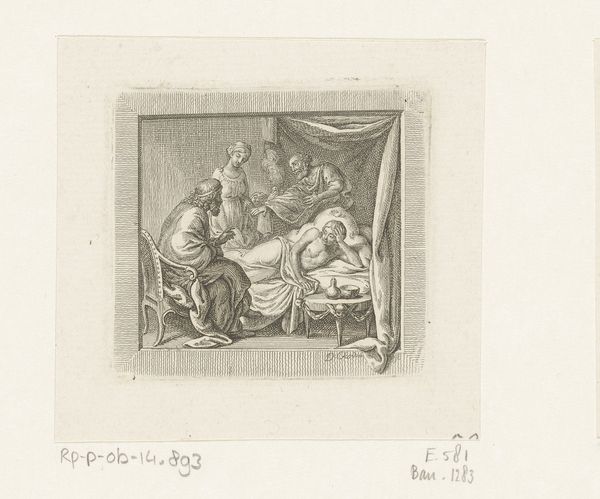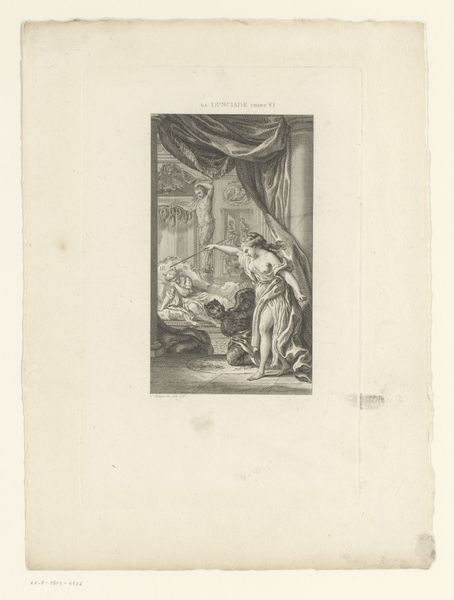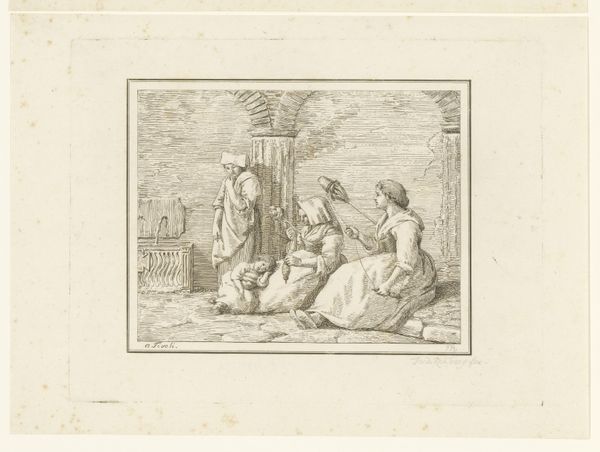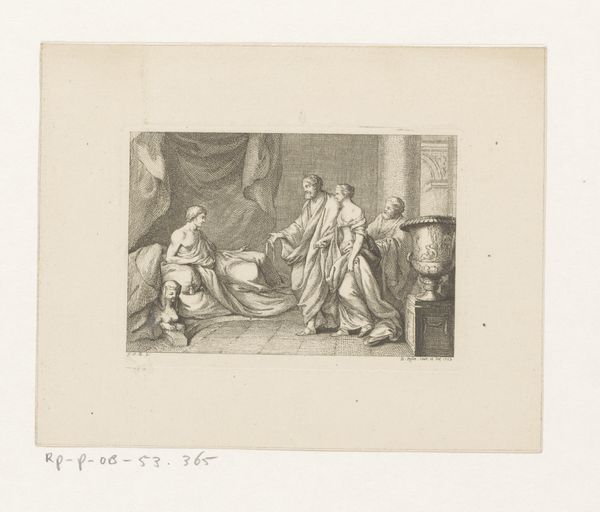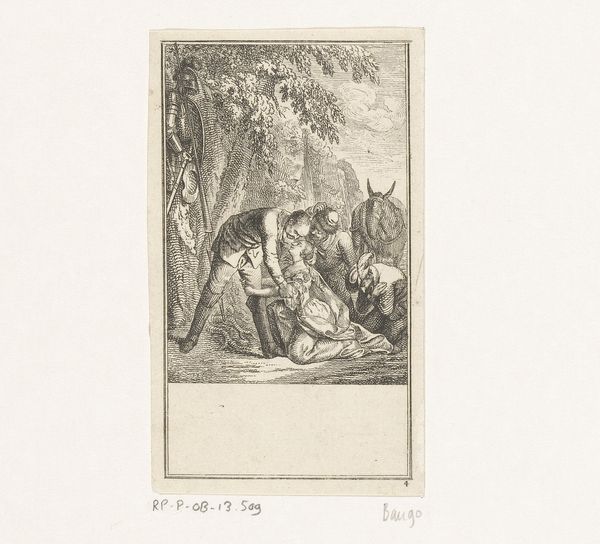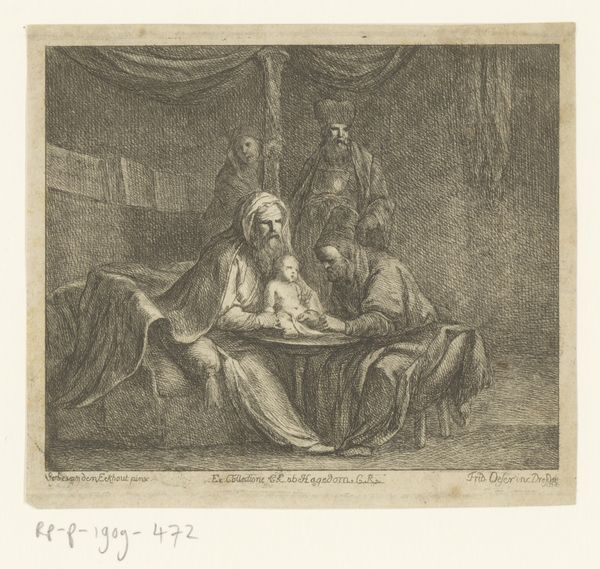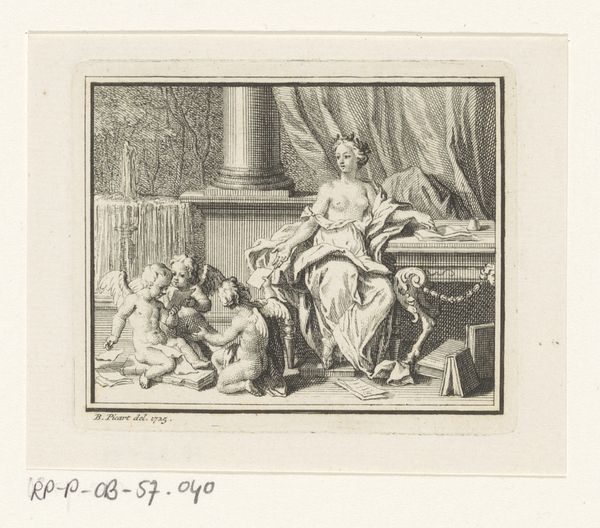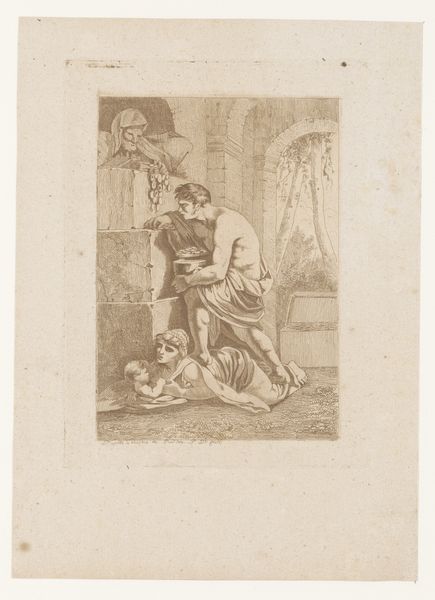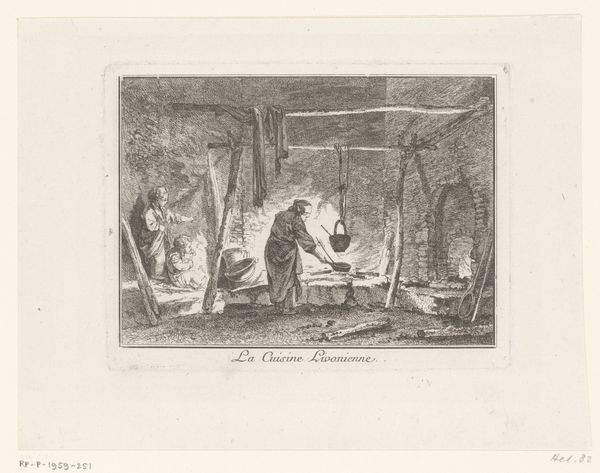
Dimensions: height 60 mm, width 74 mm
Copyright: Rijks Museum: Open Domain
Editor: This is Daniel Nikolaus Chodowiecki's "Oriëntaalse man en vrouw op een divan," created in 1782. It's an engraving, giving it a delicate, almost dreamlike quality. The figures seem so at peace, but something about the setting feels...distant. What do you see in this piece, beyond the surface level? Curator: This print offers a window into 18th-century European perspectives on the "Orient," a perspective heavily filtered through colonial desires and fantasies. Consider the title itself; it exoticizes the subjects by labeling them as "Oriental." How does the artist's choice to depict them in this manner contribute to the construction of the "other"? Editor: I see what you mean. They’re kind of frozen in this very staged pose. It’s not like they’re real people just relaxing. Curator: Precisely. Chodowiecki, like many artists of his time, participates in a broader discourse where the "Orient" is represented as a space of leisure, sensuality, and difference, ultimately reinforcing a power dynamic. Notice the setting. Does it seem authentic, or rather a European imagining of an "Oriental" interior? Editor: Definitely feels imagined. More like a stage set. So it’s not really about them, it's about European ideas about them. Curator: Exactly. It encourages us to consider the gaze, who is looking, and what assumptions they bring to the act of looking. How do we, as contemporary viewers, engage with these historical representations responsibly? Editor: I guess we need to acknowledge that these images are never neutral. There are always agendas, conscious or unconscious, shaping what we see. That is really a different reading of this piece. I am walking away with a new critical awareness! Curator: And hopefully, a new framework for engaging with art that interrogates, rather than simply accepts, dominant narratives. Art like this pushes us to ask: who has the power to represent, and what are the consequences?
Comments
No comments
Be the first to comment and join the conversation on the ultimate creative platform.
